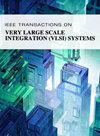Automatically Retargeting Hardware and Code Generation for RISC-V Custom Instructions
IF 3.1
2区 工程技术
Q2 COMPUTER SCIENCE, HARDWARE & ARCHITECTURE
IEEE Transactions on Very Large Scale Integration (VLSI) Systems
Pub Date : 2025-07-16
DOI:10.1109/TVLSI.2025.3586902
引用次数: 0
Abstract
Custom instruction (CI) set extensions are beneficial for increasing performance and energy efficiency in a set of target applications. For rapid prototyping of these types of application-specific processors, designers leverage hardware (HW)/software (SW) co-design to create hardware implementations and retarget the compiler using a high-level description of the instruction set extension. Ideally, the architecture description should be flexible enough to support both hardware generation and compiler retargeting from the same description format. The challenge with these methods lies in coupling hardware extensions with the processor core, because using microarchitecture-specific interfaces leads to low design reuse and increased verification effort. To mitigate these challenges, we introduce a HW/SW co-design toolset capable of adapting to a user-defined architecture description that captures the instruction set extension semantics. Based on the architecture description, the toolset can both retarget the compiler and generate co-processors interfacing with the Core-V eXtension interface (CV-X-IF) and Rocket custom co-processor interface (RoCC) protocols that are widely used standard interfaces for RISC-V processors. To demonstrate our methods, we integrate the co-processors with two different variations of CVA6 and Rocket core. The resulting execution time reduction is up to 40% on average, with an area overhead of 8% for the CVA6. For the Rocket core, the execution time reduction is 27% with a 6% area overhead.RISC-V自定义指令的自动重定向硬件和代码生成
自定义指令(CI)集扩展有助于提高一组目标应用程序的性能和能效。为了对这些类型的特定于应用程序的处理器进行快速原型设计,设计人员利用硬件(HW)/软件(SW)协同设计来创建硬件实现,并使用指令集扩展的高级描述来重新定位编译器。理想情况下,体系结构描述应该足够灵活,以支持硬件生成和编译器从相同的描述格式重定向。这些方法的挑战在于将硬件扩展与处理器核心耦合在一起,因为使用特定于微体系结构的接口会导致低设计重用和增加验证工作。为了缓解这些挑战,我们引入了一个硬件/软件协同设计工具集,该工具集能够适应捕获指令集扩展语义的用户定义的体系结构描述。基于架构描述,该工具集既可以重新定位编译器,也可以生成与Core-V扩展接口(CV-X-IF)和Rocket自定义协处理器接口(RoCC)协议接口的协处理器,这些协议是RISC-V处理器广泛使用的标准接口。为了演示我们的方法,我们将协处理器与CVA6和Rocket内核的两种不同变体集成在一起。结果执行时间平均减少了40%,CVA6的区域开销为8%。对于火箭核心,执行时间减少27%,面积开销减少6%。
本文章由计算机程序翻译,如有差异,请以英文原文为准。
求助全文
约1分钟内获得全文
求助全文
来源期刊
CiteScore
6.40
自引率
7.10%
发文量
187
审稿时长
3.6 months
期刊介绍:
The IEEE Transactions on VLSI Systems is published as a monthly journal under the co-sponsorship of the IEEE Circuits and Systems Society, the IEEE Computer Society, and the IEEE Solid-State Circuits Society.
Design and realization of microelectronic systems using VLSI/ULSI technologies require close collaboration among scientists and engineers in the fields of systems architecture, logic and circuit design, chips and wafer fabrication, packaging, testing and systems applications. Generation of specifications, design and verification must be performed at all abstraction levels, including the system, register-transfer, logic, circuit, transistor and process levels.
To address this critical area through a common forum, the IEEE Transactions on VLSI Systems have been founded. The editorial board, consisting of international experts, invites original papers which emphasize and merit the novel systems integration aspects of microelectronic systems including interactions among systems design and partitioning, logic and memory design, digital and analog circuit design, layout synthesis, CAD tools, chips and wafer fabrication, testing and packaging, and systems level qualification. Thus, the coverage of these Transactions will focus on VLSI/ULSI microelectronic systems integration.

 求助内容:
求助内容: 应助结果提醒方式:
应助结果提醒方式:


